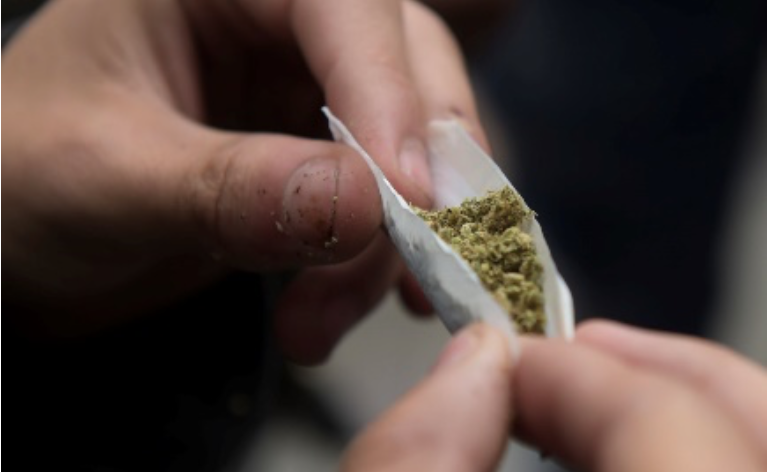INTEL REPORT--Cigarettes and alcohol have long been the preferred gateway drugs for teenagers. And the consequences—particularly for alcohol—have been dire. According to the Centers for Disease Control and Prevention, alcohol plays a role in 4,358 deaths every year for people under 21. Meanwhile, teenage smoking contributes to early heart disease, the leading cause of death in America.
But the addiction landscape could be changing. According to new research published by professors at Columbia University's Mailman School of Public Health, adolescents are increasingly trying pot before alcohol or cigarettes.
Based on information gathered from 40 annual, multi-decade surveys of high school seniors (a data set that includes nearly 250,000 students), the study reveals that, between 1986 and 2016, the average age of first cigarette use rose from eighth to ninth grade. A similar trend was evident for alcohol, with initial consumption going from ninth to nearly tenth grade between 1976 and 2016.
But as students are waiting longer to try cigarettes and alcohol, the age at which they try pot has held steady. "Alcohol and cigarette use have precipitously declined in adolescent populations for 20 years," says Katherine M. Keyes, an associate professor of epidemiology at the Mailman School. "Marijuana use has not."
Why? The relative success of public-health and -safety campaigns almost certainly has something to do with the transition. Efforts to link tobacco and cancer has hit home for many teens, as have educational programs geared at reducing alcohol consumption (in part by highlighting the dangers of drunk driving). By contrast, the growing attention to the medicinal benefits of marijuana—in addition to the rise of dispensaries in various parts of the country—may be having the opposite effect, encouraging adolescents to try the drug first, perhaps under the impression that doing so is less risky.
Good news? Maybe. By some measures, pot is far safer than alcohol—as in 114 times more safe in terms of mortality. Several qualifications underscore such a claim (it does not, for example, consider chronic use), but many public-health experts still agree that, given the comprehensive research backing the relatively innocuous impact of pot per se (as opposed to what it might make people do), efforts would be better spent regulating rather than prosecuting its use as an illegal substance.
In an email exchange with Pacific Standard, Keyes acknowledges the popular conception that pot isn't as dangerous as alcohol. But she isn't necessarily buying it either. In the last decade, she writes, "we've seen a remarkable increase in the available concentration of THC in cannabis products, and changing patterns of use, plus growing evidence that chronic cannabis administration may (preliminary data) effect the developing brain (alcohol does as well)."
Noting how "both products can be used safely in moderation," she is not prepared to conclude that one is necessarily better to adopt before the other. "I'm not sure," she warns, "that we have a solid foundation to conclude that marijuana is a 'safer' product than alcohol."
A related concern involves the nature of pot's gateway impact. According to Robert L. DuPont, director of the National Institute on Drug Abuse, marijuana has proven to be a powerful gateway substance. In an op-ed for the New York Times, he wrote, "marijuana use is positively correlated with alcohol use and cigarette use, as well as illegal drugs like cocaine and methamphetamine." Pot, he adds, also dramatically increases the likelihood of heroin use.
Rather than encourage a transition to pot over alcohol or cigarettes (by legalizing it), DuPont proposes that public-health officials actively discourage its use as fervidly as they do other drugs—such as cigarettes. The bottom line, according to DuPont, is that "people who use marijuana consume more, not less, legal and illegal drugs, than do people who do not use marijuana."
Not everyone agrees with this assessment. In his own New York Times op-ed, Ethan Nadelmann, director of the Drug Policy Alliance, downplayed marijuana's gateway effect. "[T]he vast majority of people who use marijuana never progress to using other illicit drugs, or even to becoming regular marijuana consumers," he wrote, citing evidence suggesting an association between "the proliferation of medical marijuana laws and dispensaries around the United States" and "fewer people dying from overdoses involving heroin and pharmaceutical opioids."
Keyes, for her part, says this either/or-style debate over the benefits and drawbacks of pot replacing alcohol and cigarettes is unproductive. "Arguing about which one is safer to use, to me, misses the larger point that both can be a problem for some people," she writes. "Reducing adolescent smoking has been a remarkable achievement of the past 20 years. Now, the more prominent role of marijuana in the early stages of drug use sequences and its implications are important to continue tracking." In other words, when it comes to public health, society is better off advocating "for regulations and policies that reduce the harm of use" than debating which is more dangerous than the other.
(James McWilliams is a Pacific Standard contributing writer, a professor at Texas State University, and the author of Just Food: Where Locavores Get It Wrong and How We Can Truly Eat Responsibly and a Revolution in Eating: How the Quest for Food Shaped America. This piece was posted first at PSMag.com.)
-cw







